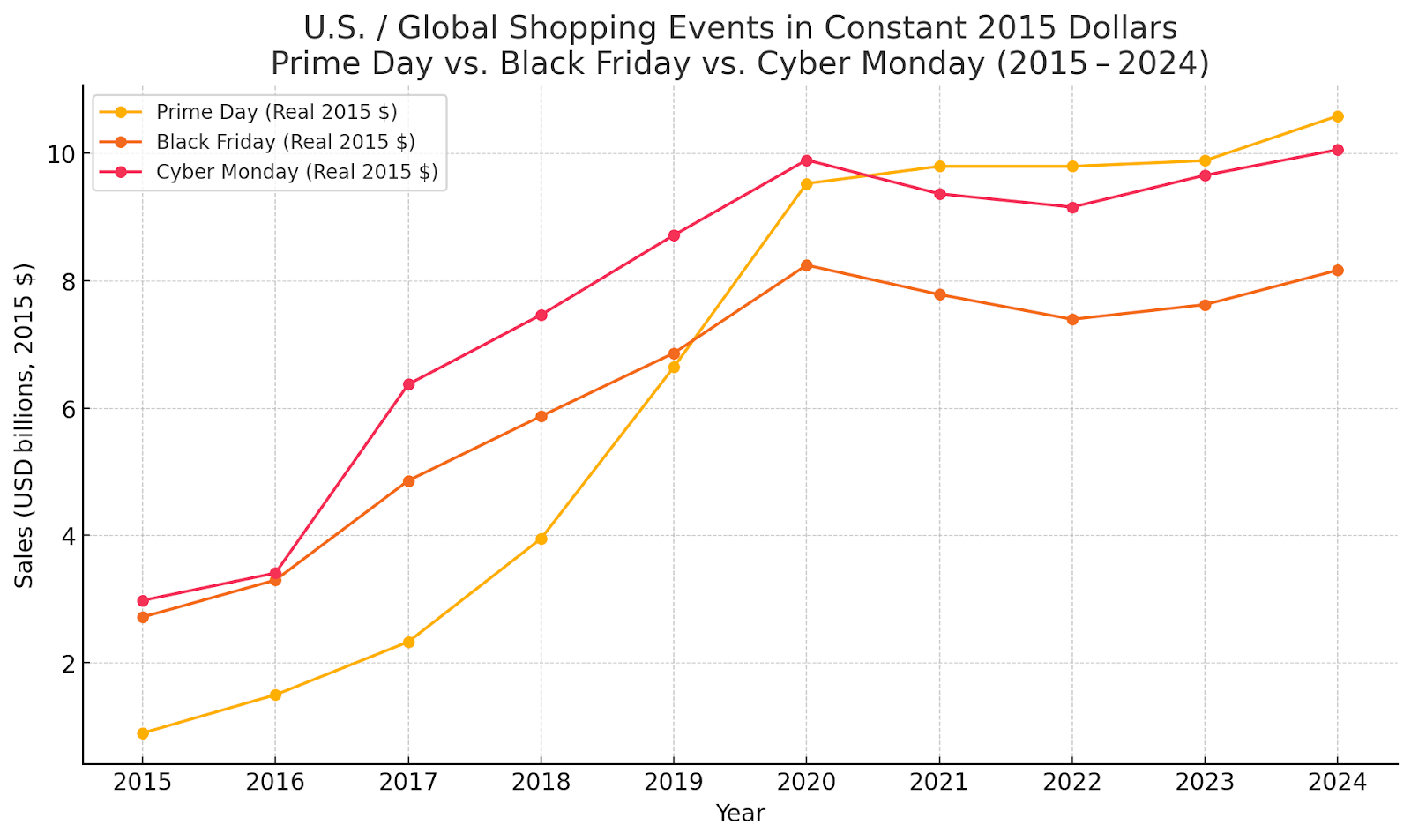
Amazon has made it impossible not to notice the difference between previous Amazon Prime Days and Prime Day 2025. For starters, the event is offering more pre-Prime Day deals for consumers who just can't wait. Then there's the actual event itself. Once confined to a single day coinciding with a prime number (like 07/09, or 709), this year it stretches from 07/08 (not a prime number) through 07/10 and 07/11 (also not prime numbers).
For retailers, though, the countless ads, emails, and push notifications have yet to answer the big question hanging in the air: Is Prime Day still prime real estate, or has Amazon squeezed all the juice out of this once-huge event by making it too big?
It's hard not to compare Prime Day(s) to Black Friday and Cyber Monday. Once the premier shopping holidays in the United States, both have lost some luster in recent years. Consumer perception is that whatever magic once drove them to (literally or figuratively) wait in line at 4 a.m. has disappeared.
There's some truth to that. Adjusted for inflation, Black Friday and Cyber Monday ecommerce sales (in inflation-adjusted terms) have slowed from double-digit growth in the 2010s to mid-single digits post-COVID. The transition from Cyber Monday to “Cyber Week” seems to have stalled these events’ momentum, and that correlation could mean bad news for Amazon Prime Day.
But the comparison isn’t a perfect analogue, and the data is too noisy to draw confident conclusions. The slide in growth happened during COVID-19 and the years immediately following it (periods when inflation dominated the news in 2021 and 2022). Not to mention, Amazon Prime Day is a relatively recent phenomenon; and one without Black Friday’s legacy baggage and nostalgia.

Historically, when adjusted to constant dollars, Amazon Prime Day has tracked Black Friday/Cyber Monday patterns pretty closely. But Prime Day 2025 is facing some added headwinds:
Brands and retailers still might (and probably should) be concerned that Prime Day could be losing some of its luster, but they also have good reason to believe reports on the death of Prime Day have been greatly exaggerated. Amazon is convinced that this is a good move; some good reasons to keep faith include:
The short answer? Maybe. At CommerceIQ, we suspect that this will be the largest Prime Day Amazon has ever held, by a wide margin. The real question is whether it will break the trend of stalled inflation-adjusted growth from the last few years.
We suspect it will. The available data doesn't provide strong support for the theory that extending big sales events sacrifices exclusivity. Amazon appears confident about its internal analysis, and absent any clearer numbers, it makes sense to trust that they know what they're doing.
Ready to optimize your ecommerce strategy with purpose-built AI? Request a demo.
Sources:
1450+
retailers
100+
mobile apps
59
countries
250+
engineers and
data scientists
CommerceIQ is the only sales-focused, unified platform built specifically for ecommerce—combining sales, media and shelf data with role-specific AI teammates that deliver actionable, commerce-ready insights.
